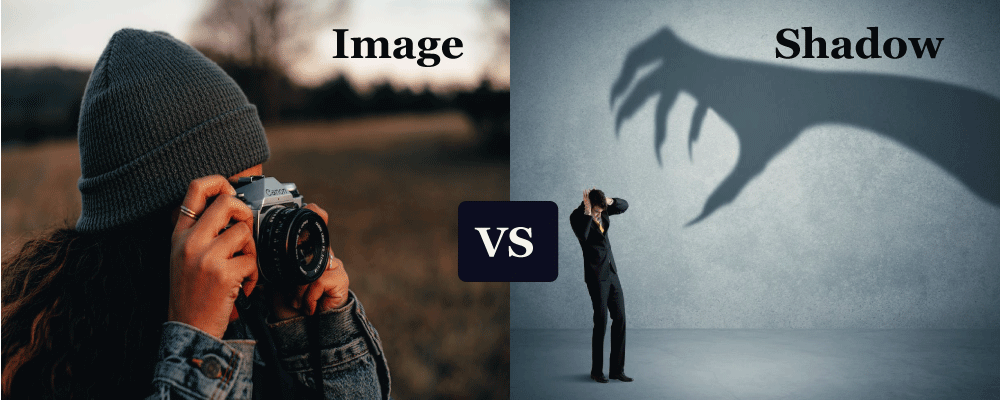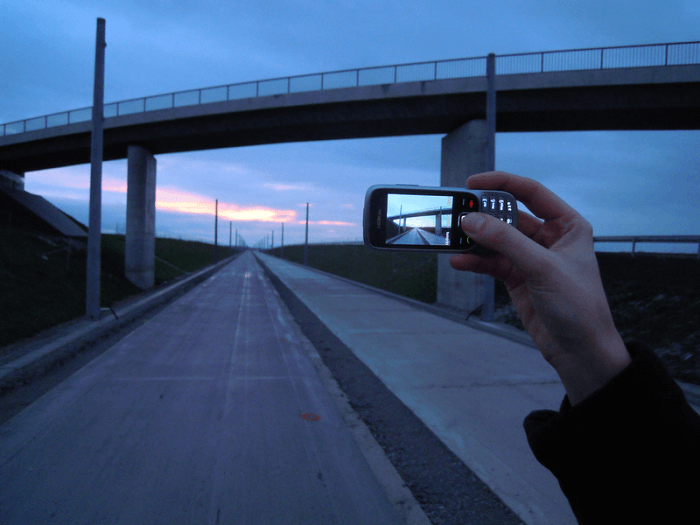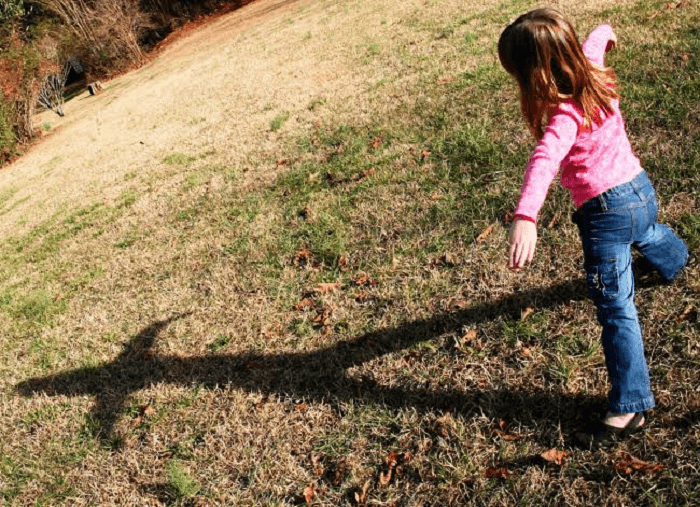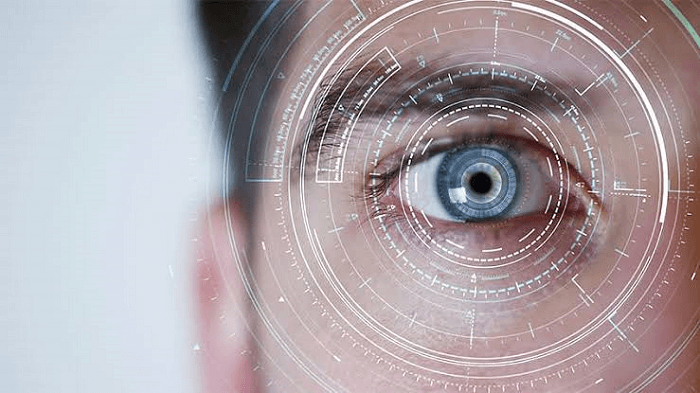Difference Between Image and ShadowImages and shadows are independent visual phenomena with distinct features created by different systems. An image depicts an object or scene created by directing light rays onto a surface, such as a camera sensor or film. A shadow is a dark region generated when an item blocks the light flow. 
Images and shadows are related to the existence and behaviour of light in this way, but they have distinct features and applications. ImagesA visual depiction of anything can be stated as image. It can be two-dimensional, three-dimensional, or transmit information to the visual system in another way.. A photograph or similar two-dimensional subject representation can be considered an image. An image is a color amplitude distribution in context of signal processing. The term "image" in optics may specifically refer to a two-dimensional image. To be a visual representation, an image does not have to utilise the complete visual system. A common example is a greyscale image, which utilizes the visual system's sensitivities to brightness across all wavelengths without accounting for differing colours. A black-and-white visual representation of a thing is still an image, even if it does not fully utilise the visual system's potential. Images are usually static. However, they can be moving or animated in some circumstances. Characteristics of ImagesImages can be two-dimensional or three-dimensional, like a photograph or a screen projection, or three-dimensional, like a statue or hologram. They can be captured by optical instruments like cameras, lenses, mirrors, and microscopes, as well as natural objects and phenomena such as the human eye or water. Any two-dimensional figure, like a map, pie chart, graph, painting, or banner, can also be called an "image." Images can be created manually, as in drawing, painting, or carving, or manually as in printing or computer graphics technology, or by merging methods. A volatile image is one that only stays for a short time. This could be a mirror reflection, a camera obscura projection or a scene projected on a cathode-ray tube. A hard copy is a fixed image that has been recorded on a material object, like paper or textile, using photography or any electronic method. 
A mental image resides in an individual's mind as something remembered or imagined. An image's subject matter does not have to be authentic, it could be an abstract word such as a graph, function, or fictional object. Many psychoanalytic and social science experts, including Slavoj Iek and Jan Berger have pointed out the capability of influencing mental images for ideological goals. Two-dimensional (2D) A two-dimensional (2D) image visually represents something with only two spatial dimensions. Most 2D graphics are rectangular. Rasterization is a term used to describe a widespread method of displaying 2D images in the past. 2D images are the most popular sort of image as of 2021. In image processing, a picture function is a mathematical representation that shows a two-dimensional image as the function of two spatial variables. Three-dimensional (3D) Three-dimensional (3D) images are less frequent than two-dimensional images. To effectively portray visual information, three-dimensional images integrate into the optical system's perception of depth. Holograms are a common physical form of 3D representations. Human eyes can see 3D space which are commonly known as depth perception. Depth perception allows people to see the world around them in all three spatial dimensions. The three dimensions of space are first experienced by the human eye's by visual brain as 2D images. On the other hand, humans have stereoscopic vision implying that the two eyes do not view the same image. Each eye registers slightly different images, allowing the brain to analyze visual information discrepancies, explore image depth, as well as record all three dimensions concurrently. A 3D image is generated by computer visual that simulates the depth perception of a real-world item. This technique is used extensively in movies, video games, graphics, and virtual reality (VR) projects like the metaverse. Types of ImagesThere are numerous varieties of images, some of which are as follows:
Digital or physical images captured using a light and color camera. Photographs can be black and white or color, and they can be modified with software to change the brightness, contrast, and other parameters.
Drawings are hand-drawn images generated with pencils, pens, or other drawing tools.
Images made with paint on canvas or another material.
Illustrations are images that are generated to accompany text or other media and are frequently used in books, periodicals, or websites. Illustrations are useful in order to convey complicated ideas, to generate branding materials, or to give visual appeal to a text.
Infographics are images that display information, such as charts, graphs, and diagrams.
These are images that are used to symbolise a business, product, or service. Logos generally consist of a symbol, text, or a combination of the two and are used to identify a brand in a range of places, including on products, websites, and marketing materials. A good logo will be simple, distinct, and easily recognizable, and represent the core of the brand.
Stock images are images licensed for commercial or editorial use and are frequently offered by organizations like Shutterstock or Getty Images. ShadowA shadow is a dark area generated by an opaque object that prevents light from reaching a light source. The entire three-dimensional space behind an object that has light in front of it is taken up by it. The cross-section of a shadow is a two-dimensional silhouette and reversed projection of the item that is obstructing the light. Point and non-point light sourcesA simple shadow generated by a point source of light called a "umbra." The shadow of a non-point or "extended" light source is divided into three parts. Those are umbra, penumbra, and antumbra. The less defined the shadow, the wider the light source will become. When two penumbras overlap, shadows appears to attract and join. This is known as the shadow blister effect. Tracing the light rays emitted by the expanded light source's outermost areas generates the outlines of the shadow zones. Because it obtains no direct light from any site of the light source and the umbra zone is the darkest. A viewer in the umbra region cannot see any part from the light source directly. On the other hand, the penumbra is lighted by some areas of the light source, resulting in an intermediate level of light intensity. 
The light source is visible to a viewer in the penumbra zone, but it is partially obscured by the item producing the shadow. If there are several light sources, there will be several shadows, with the overlapping areas darker and changing brightnesses or even colors. The softer and vaguer the shadow shapes get until they disappear as the lighting becomes more diffuse. An overcast sky's brightness produces few noticeable shadows. Shadows are sharp and clearly defined by high-contrast boundaries between light and dark in outer space since there are no mitigating atmospheric effects. Shadows converge at a point of contact for an individual or object touching the projected shadow's surface. Except for distortion, a shadow exhibits the same image as a silhouette when viewed from the sun side, resulting in a mirror image of the silhouette from the other side. Astronomy The terms umbra, penumbra, and antumbra are commonly used to describe the shadows produced by astronomical objects. Still, they can also be used to denote levels of darkness as in sunspots. When an astronomical object's apparent magnitude is equal to or less than -4, it creates human-visible shadows. The Sun, Moon, and under certain conditions Venus or Jupiter are the only heavenly objects capable of casting visible shadows on Earth. Darkness is generated by a planet's hemisphere obscuring its orbiting star's sunlight. When the Earth leaves a shadow on the Moon, it is called a lunar eclipse. A solar eclipse, on the other hand, is a shadow cast from the Moon on the Earth. Dimension A shadow has three dimensions. However, unless it projected onto a reflective surface, this is usually not noticeable. Volumetric patterns in light and shadow can be revealed in 3D by a light fog, mist, or dust cloud. Viewers who are not used to viewing shadows in three dimensions may find fog shadows strange. 
A thin fog is deep enough that light entering through gaps in a structure, or a tree illuminates it. As a result, the passage of a shadow through fog is seen as a darkened volume. In some ways, these shadow lanes are the opposite of crepuscular rays and the shadows cast by them on solid objects. Lighting designers and visual artists who want to emphasize the three-dimensional qualities of their work may use theatrical fog and intense beams of light. Types of ShadowsShadows are classified into numerous types those are as follows
A cast shadow is cast by an item that blocks a light source. The cast shadow appears behind the object on a surface. Cast shadows have precise edges and form where an object intersects the surface. The shape of the cast shadow is determined by the object's shape, the angle of the light source, as well as the distance among the object and the surface on which the shadow is cast. The intensity and size of the cast shadow are also affected by the light source's intensity and size.
A shadow attached to the item because the object's surface has been bent or curved. Attached shadows have smoother edges than cast shadows. Attached shadows are less affecting than cast shadows because they are more diffuse and less defined. The attached shadow's shape is determined by the shape of the item and the angle of the light source.
A shadow cast by an item on its surface, commonly observed in 3D computer graphics in video games. Self-shadows are often softer compared to cast shadows and can serve to give an object depth and dimension. Self-shadows can be utilised to add depth and dimension to an image. Depending on the intensity and direction of the shadow, they may convey a sense of mood or atmosphere. Furthermore, because they are a natural and typical element in most lighting circumstances, self-shadows can be used to enhance authenticity to an image.
This kind of shadow is created by an object's shape and curve and appears on the object itself. In areas where the item curves away from the light source, form shadows are often darker.
This kind of shadow is a visual effect that is frequently used to create the appearance of depth and separation from the background in graphics or text. Drop shadows are projected onto the background and are often soft and unclear.
A silhouette is a solid, dark shape that appears as a black outline against a lighter background when an object is backlit.
A transparent Shadow is a partially or transparent shadow seen in glass or water. The degree of transparency in a transparent shadow is determined by various factors, including the object's thickness, the angle of the light source, and the opacity of the substance used to make the object. Transparent shadows can be used to add depth and dimension to an image, as well as texture and complex to the object throwing the shadow. Similarities Between Image and ShadowImages and shadows are ideas that are related in several ways:
An image is generated when light is caught on a surface or sensor, whereas a shadow is created when an object blocks light.
A image can convey information about a scene or object, whereas a shadow can convey information about an object's shape, size, and position.
Art and photography can creatively use images and shadows to elicit emotions, tell tales, and communicate ideas.
The environment can influence the appearance of an image or shadow. The appearance of an image or shadow can be altered by the lighting, color, and texture of the environment in which it is formed.
Images and shadows can be edited or enhanced using digital or conventional approaches such as editing software, filters, or physical items. Difference Between Image and ShadowAn image represents an object or scene created by projecting light rays onto a surface, such as a camera sensor or film. In contrast, a shadow is a dark region generated when an object blocks the light flow. The following table summarises some of the fundamental distinctions between an image and a shadow
Conclusion
To conclude, an image depicts an object or scene created by projecting light rays onto a surface, such as a camera device or film. It has distinct qualities and properties and can be employed in various applications including photography, art, science, and technology. A shadow is a dark region generated when an item blocks the flow of light. It merely has the basic shape and outline of the thing casting it and not normally utilized to impart information or convey meaning unless for artistic or dramatic effect. While images and shadows are equally significant visual phenomena, their qualities, and attributes distinguish them.
Next TopicDifference Between
|
 For Videos Join Our Youtube Channel: Join Now
For Videos Join Our Youtube Channel: Join Now
Feedback
- Send your Feedback to [email protected]
Help Others, Please Share










